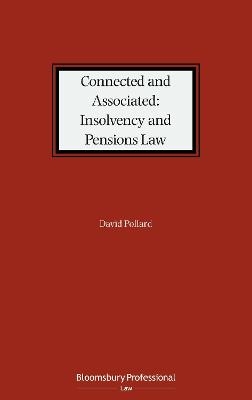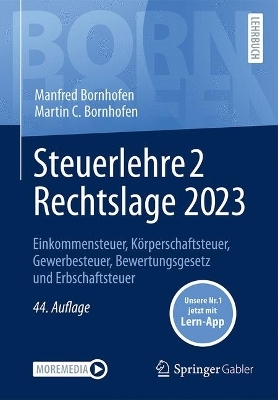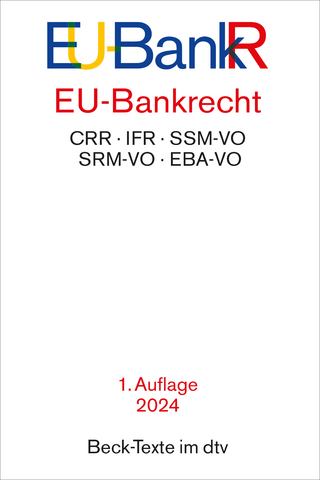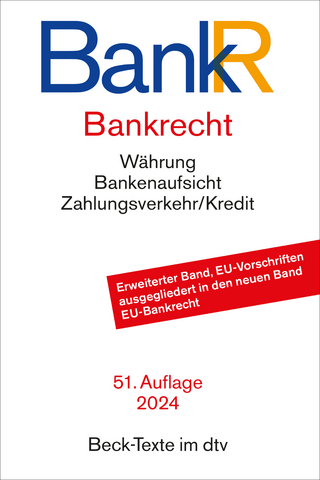
Connected and Associated: Insolvency and Pensions Law
Bloomsbury Professional (Verlag)
978-1-5265-1959-7 (ISBN)
- Titel nicht im Sortiment
- Artikel merken
Connected and Associated: Insolvency and Pensions Law will help you to:
- Decide whether a person is connected or associated with another under the insolvency test for the purposes of preferences, transactions at an undervalue, or voting in creditor meetings
- Decide whether there is a risk of falling within the potential target net for a contribution notice or financial support direction under the moral hazard powers of the Pensions Regulator in the Pensions Act 2004
- Check whether an investment by a pension scheme is within the limits on employer-related investment under the Pensions Act 1995
- Work out when a disposal by an administrator will be to a connected person
- Work out who satisfies the independence test for an evaluator
- Deal with connected person voting majorities in a creditor vote in a CVA and a Part A1 Moratorium
- Understand the implications of the Administration (Restriction on Disposal etc. to Connected Persons) Regulations 2021
Written by David Pollard, one of the leading experts in this field, this is the only in-depth review of the complex test for connected or associated persons and, as such, is an essential title for insolvency and pension lawyers, litigators, pension trustees, employers, investors, lenders and their advisers.
David Pollard is a leading and highly experienced lawyer in the insolvency and pensions fields and in related areas. He is a barrister, practising from Wilberforce Chambers in Lincoln’s Inn, and previously practised for 37 years as a solicitor in London and Singapore. David's practice focuses on pensions law; insolvency law and; employment law (involving pensions). He was Chairman of the Association of Pension Lawyers (APL) from 2001 to 2003 and has been a vice chair of the Industrial Law Society.
This title is included in Bloomsbury Professional's Pensions Law online service.
David Pollard is a leading and highly experienced lawyer in the insolvency and pensions fields and in related areas. He is a barrister, practising from Wilberforce Chambers in Lincoln’s Inn, and previously practised for 37 years as a solicitor in London and Singapore. David's practice focuses on pensions law; insolvency law and; employment law (involving pensions). He was Chairman of the Association of Pension Lawyers (APL) from 2001 to 2003 and has been a vice chair of the Industrial Law Society.
PART 1: INTRODUCTION
1. Introduction
2. Outline: the ‘ connected ’ or ‘ associated ’ test
3. Why does being ‘ associated’ or ‘ connected’ matter?
PART 2: INTERPRETING SECTIONS 239 AND 435
4. Overview of Interpretation Principles
5. Other statutes: defining control or associate ?
6. Interpreting ss 249 and 435: Hansard
7. Interpreting ss 249 and 435: Cork Report and government response
8. Interpreting ss 249 and 435: Scots law and laws of other jurisdictions
9. What do the defi nitions mean ? Who do they apply to ?
PART 3: USES OF CONNECTION, ASSOCIATION OR CONTROL
10. Insolvency legislation
11. Insolvency: Reversible transactions
12. Insolvency: creditor votes in CVAs and IVAs and Part A1 moratorium
Part A1 Moratorium extension votes
13. Insolvency: disposals by administrators to connected persons: 2021 Regs
14. Pensions legislation: Moral hazard provisions of the Pensions Act 2004
15. Pensions legislation: Employer-related investment – PA 1995, s 40
16. Pensions legislation: Notifi able events – PA 2004, ss 69 and 69A
17. Pensions legislation: other provisions
PART 4: CONNECTED
18. The terms ‘ connected ’ and ‘ associated ’ : general
19. Who is connected ? : persons and companies
20. Connected persons: IA 1986, Sch B1, para 60A
PART 5: DIRECTORS, EMPLOYERS AND EMPLOYEES
21. Directors and de facto directors
22. Shadow directors
23. Common directorships – connected
24. Employers and employees
25. Officers and managers
PART 6: ASSOCIATES
26. Who is an associate ?
27. Associate – individuals
28. Trusts and trustees – s 435(5)
29. Pension scheme as a trust – s 435(5)(b)
30. Other trusts: Employee Share Schemes and Charities
31. Partners – s 435(3)
32. Limited liability partnerships (LLPs) – s 435(3A)
33. Is the capacity of association or connection relevant ?
34. Associate – companies
PART 7: CONTROL
35. ‘ Control ’ as defined in s 435(10)
PART 8: CONTROL THROUGH VOTING POWER – S 435(10)(B)
36. Voting power – Unidare and Box Clever cases
37. Voting power – Nominees and custodians
38. Share mortgages
39. What is voting power ‘ at any general meeting ’ ?
40. Are groups of shareholders aggregated for control purposes ?
41. Timing of control – eg on share sales ?
PART 9: CONTROL THROUGH ‘ DOMINATION ’ OF DIRECTORS – S 435(10)(A)
42. Comparing s 435(10)(a) with the shadow director definition in s 251
43. What does ‘ accustomed to act ’ mean ?
44. Can advisers have ‘ control ’ ? Is the shadow director test for advisers different from the control test ?
45. Is ‘ domination ’ of a single director enough ?
46. Appointors of nominee directors or board representatives
PART 10: CONTROL AFTER INSOLVENCY ?
47. Is existing control lost if the company enters insolvency ?
48. Insolvency and control: Existing case law
49. What is the effect if a company enters into an insolvency process ? : example
50. Insolvency and ‘ Dominated ’ Directors – s 435(10)(a)
51. Insolvency and ‘ voting power in any general meeting ’ – s 435(10)(b)
52. Insolvency: Are any shareholder general meetings actually held ?
53. Statutory trust on a liquidation: Ayerst
54. ‘ Control ’ in other contexts: Tax law
55. ‘ Control ’ in other contexts: Employment law
56. Administrative receivership: Box Clever
57. Look at term being defined ?
58. Liquidation: Linter Textiles
59. Summary of position on ‘ voting power ’ in insolvency
60. Application to examples
61. Summary on impact of insolvency on Control
PART 11: MAIN CONCLUSIONS ON CONTROL
62. Section 435(10) control is important
PART 12: WHO IS NOT CONNECTED OR ASSSOCIATED ?
63. Not connected or associated ?
64. Purchasers of companies or businesses
PART 13: CVAS AND IVAS – CONNECTED CREDITORS
65. Connected creditors
66. Pension trustee as connected or unconnected in a CVA
Appendix A: Insolvency Act 1986, ss 249 and 435 and linked legislation
Appendix B: Company Law Review Steering Group (2000)
Appendix C: Similar terms in other legislation
| Erscheinungsdatum | 02.12.2021 |
|---|---|
| Verlagsort | London |
| Sprache | englisch |
| Maße | 156 x 248 mm |
| Gewicht | 771 g |
| Themenwelt | Recht / Steuern ► EU / Internationales Recht |
| Recht / Steuern ► Wirtschaftsrecht ► Bank- und Kapitalmarktrecht | |
| ISBN-10 | 1-5265-1959-3 / 1526519593 |
| ISBN-13 | 978-1-5265-1959-7 / 9781526519597 |
| Zustand | Neuware |
| Haben Sie eine Frage zum Produkt? |
aus dem Bereich


